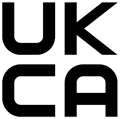UKCA Marking v CE Marking
Introduction
When buying new equipment (including machinery), we are required to check it complies with all relevant supply laws, have access to or be supplied with a Declaration of Conformity and receive user instructions in English; and ensure it is free from any obvious defect (such as missing guards).
Checking this can be difficult enough when purchasing from suppliers in the UK (England, Scotland and Wales) but everything gets more complex when sourcing equipment from outside the UK.
Purchasing goods from outside the UK
Colleges and Professional Services are encouraged to purchase goods from within the European Economic Area (EEA (incls. EU countries and Iceland, Liechtenstein, and Norway)). This as in many cases it is simpler with regards to transporting the goods through customs and due to the standards, which must be met when placing items on the market for sale which provide some assurance the goods met a suitable safety standard.
UKCA Mark
Following Brexit the Government decided there would be a change in CE Marking and that from 1st January 2025 only UKCA marked items would be accepted in the UK.
HOWEVER – IMPORTANT CHANGE
On 1st August 2023 the Government stated its intention to extend recognition of the CE marking for placing most goods on the market in Great Britain, indefinitely, beyond December 2024. These updates apply to the 18 regulations that fall under the Department for Business and Trade (DBT). These are:
-
toys
-
pyrotechnics
-
recreational craft and personal watercraft
-
simple pressure vessels
-
electromagnetic compatibility
-
non-automatic weighing instruments
-
measuring instruments
-
measuring container bottles
-
lifts
-
equipment for potentially explosive atmospheres (ATEX)
-
radio equipment
-
pressure equipment
-
personal protective equipment (PPE)
-
gas appliances
-
machinery
-
equipment for use outdoors
-
aerosols
-
low voltage electrical equipment
NOTE: Different rules apply for medical devices, construction products, cableways, transportable pressure equipment, unmanned aircraft systems, rail products, marine equipment and ecodesign. The relevant departments covering these sectors will have communicated, or will communicate, plans in due course.
What does this mean? CE Marking v UKCA Marking

 It means in the 18 areas detailed above, British firms will be able to choose whether to use the new UKCA symbol or retain the CE mark (required if they wish to sell their product in the EU) by applying to have their products certified by an accredited European body. So, Colleges / Services may, on goods purchased in the UK, see a CE Mark or a UKCA Mark or a mixture of both.
It means in the 18 areas detailed above, British firms will be able to choose whether to use the new UKCA symbol or retain the CE mark (required if they wish to sell their product in the EU) by applying to have their products certified by an accredited European body. So, Colleges / Services may, on goods purchased in the UK, see a CE Mark or a UKCA Mark or a mixture of both.
Goods from outside the UK will still require a CE Mark because of EU laws.
Does CE/UKCA Marking guarantee safety?
By affixing the UKCA and / or CE mark, the manufacturer is claiming the machinery complies with the law. However, marking does not guarantee safety and you should still carry out basic checks to ensure the item is safe before first use. For example, nothing is missing, guards are in place, warning labels displayed, the correct user guide is provided in English, cables and connection points are sound, safety interlocks work.
What about China Exports?
In recent years we have used the presence of a CE mark as an indicator of safety as we assume it demonstrates the goods or equipment meet relevant and strict EU standards.
Unfortunately, some Universities became aware of a similar mark which most consumers and even sellers could mistake as the CE mark of the European Union but was different. This alternative CE mark meant "China Export" and only means the product was manufactured in China. It is important staff/students understand this mark does not imply that the equipment is safe and compliant with standards for sale within the European market.
It is anticipated issues could also arise with forged / fraudulent UKCA marked products.
